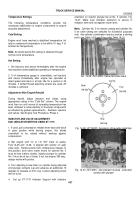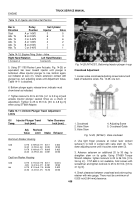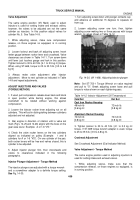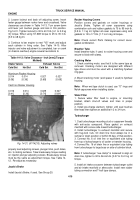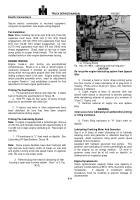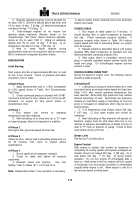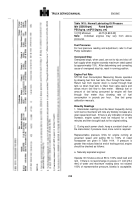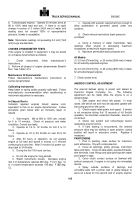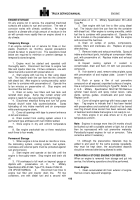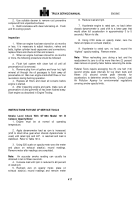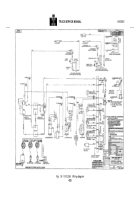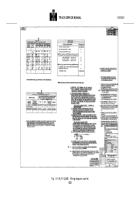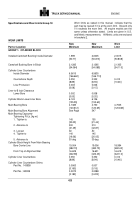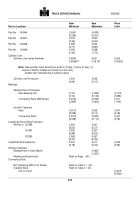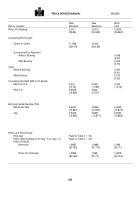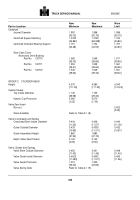TM-5-3805-254-14-P-2 - Page 421 of 894
TRUCK SERVICE MANUAL
ENGINE
2. Use suitable cleaner to remove rust preventive
compound from unpainted surfaces.
3. Refill crankcase with clean lubricating oil.
Flush
and fill cooling system.
Inspection
1. When an engine has been stored for six months
or less, it is necessary to adjust injectors, valves and
belts, tighten cylinder head capscrews and connections;
replace filters and check air filter and screens.
2. When an engine has been stored for six months
or more, the following procedure should be followed:
a. Flush fuel system with clean fuel oil until all
preservative oil is removed.
b. Remove plug from oil gallery and force hot, light
mineral oil through the oil passages to flush away all
preservative oil.
Bar over engine crankshaft three or four
revolutions during flushing operation.
c. Replace all filters and clean all screens before
engine is started.
d. After inspecting engine and parts, make sure all
preservative oil and gummed oil has been flushed away.
Start engine as described in Engine Testing.
INSTRUCTIONS FOR USE OF SERVICE TOOLS
Smoke Level Check With ST1294 Model 101 B
Celesco Opacity Meter
1. Engine must be at normal oil operating
temperature.
2. Apply dynamometer load as rpm is increased;
(shift to direct drive gear when chassis dynamometer is
used) until rated rpm and H.P.
is reached and load is
stabilized.
Refer to Table 1414.
3. Using 020 scale on opacity meter zero the meter
and place on exhaust stack(s); record readings.
Remove meter after readings are completed.
Note:
An accurate smoke reading can usually be
obtained in ten to fifteen seconds.
4. Increase load until rpm is reduced to 60 percent
of rated rpm.
5. Recheck zero on opacity meter, place on
exhaust stack(s); record readings and remove meter
6. Reduce load and rpm.
7. Accelerate engine to rated rpm, no load (when
chassis dynamometer is used shift to a lower gear that
would allow full acceleration in approximately 3 to 5
seconds.) Return to idle.
8. Using 0100 scale on opacity meter, zero the
meter and place on exhuast stack(s).
9. Accelerate to rated rpm, no load, record the
“highest” opacity reading.
Remove meter.
Note:
When rechecking zero during a test and the
readjustment to zero is off by more than two (2) percent
clean lenses on opacity meter before rezeroing the scale.
Federal Tests require averaging five (5) one half (1/2)
second smoke peak intervals for lug down tests and
fifteen
(15)
second
smoke
peak
intervals
for
acceleration, to determine smoke levels.
Consult Local
Air Pollution Agency for environmental regulations
covering smoke opacity limits.
417
Back to Top

